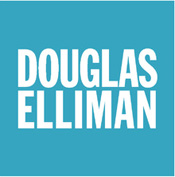If you suspect there were fewer home sales this summer you are correct. But that is not necessarily a bad sign for the real estate market.
Homes sales are returning to a more stable market, say Realtors, noting that a lower number of closings recorded this third quarter compared with the same time period last year is actually a reflection of the long bad-weather winter that held down showings and inventory.
“There is not a lot of volatility in the current market. We are clearly in a stable recovery. And stability is good for the real estate market,” said J. Philip Faranda, president of the Hudson Gateway Multiple Listing Service, part of the Hudson Gateway Association of Realtors, which released its quarterly report Tuesday.
Home sales in all four counties serviced by the Hudson Gateway Multiple Listing Service was 4,545 units, just 90 units or 1.9 percent fewer than in 2013.
Westchester, the largest county in the MLS region, posted a sales decrease of 2.7 percent, to 2,863 units. Rockland followed closely with a 2.4 percent decrease. In Putnam sales actually increased by 3.1 percent, although that was measured against a small base of a few hundred units, according to the association.
“The pace of real estate sales in the third quarter of 2014 was just a shade slower than it was in 2013 when there was a very strong post-recession recover under way,” says the realty group.
By contrast in the first quarter of the year sales soared with a roughly 10 percent jump, but have clearly quieted down.
“Even though sales are down, prices are up — which is a very good sign of the recovery,” said Joseph Rand, manager partner of Better Homes & Gardens Rand Realty.
His high-end condominium in Nyack recently sold at just under $1.3 million.
“We are seeing growth and the market is getting stronger,” he said. “Don’t read too much into one quarter. Now the trajectory is very good and well paced.”
Nationally, there was a decline in existing home sales this summer with analysts seeing it as part of a larger market reset over the past seven or so years.
National Association of Realtors’ Chief Economist Lawrence Yun says one possible reason for the slight decline in sales this summer are modest price appreciations in homes and a lower inventory. The market is less appealing to investors, he said.
Another example of stability in the market is that mortgage interest rates remained relatively low. The average rate for a 30-year conventional mortgage hovered between 4.4 and 4.2 percent during the quarter.
All-cash sales remained popular in closing a deal, said RealtyTrac in noting that almost half the homes sold in the New York metro area in the first half of 2014 had no loan situation.
Price levels appear to be emerging from the recession with increases in median home prices in Westchester and Rockland counties.
The median sale price of a single-family house in Westchester was $682,500, up by 4.7 percent over 2013. In Rockland, the median house was $415,000, up by 2 percent.
However, in Putnam County there was a decrease in single-family houses with the current median price at $320,000, down 3.8 percent from last year but with a relatively low sales volume.
read more…
http://www.lohud.com/story/news/2014/10/16/




















